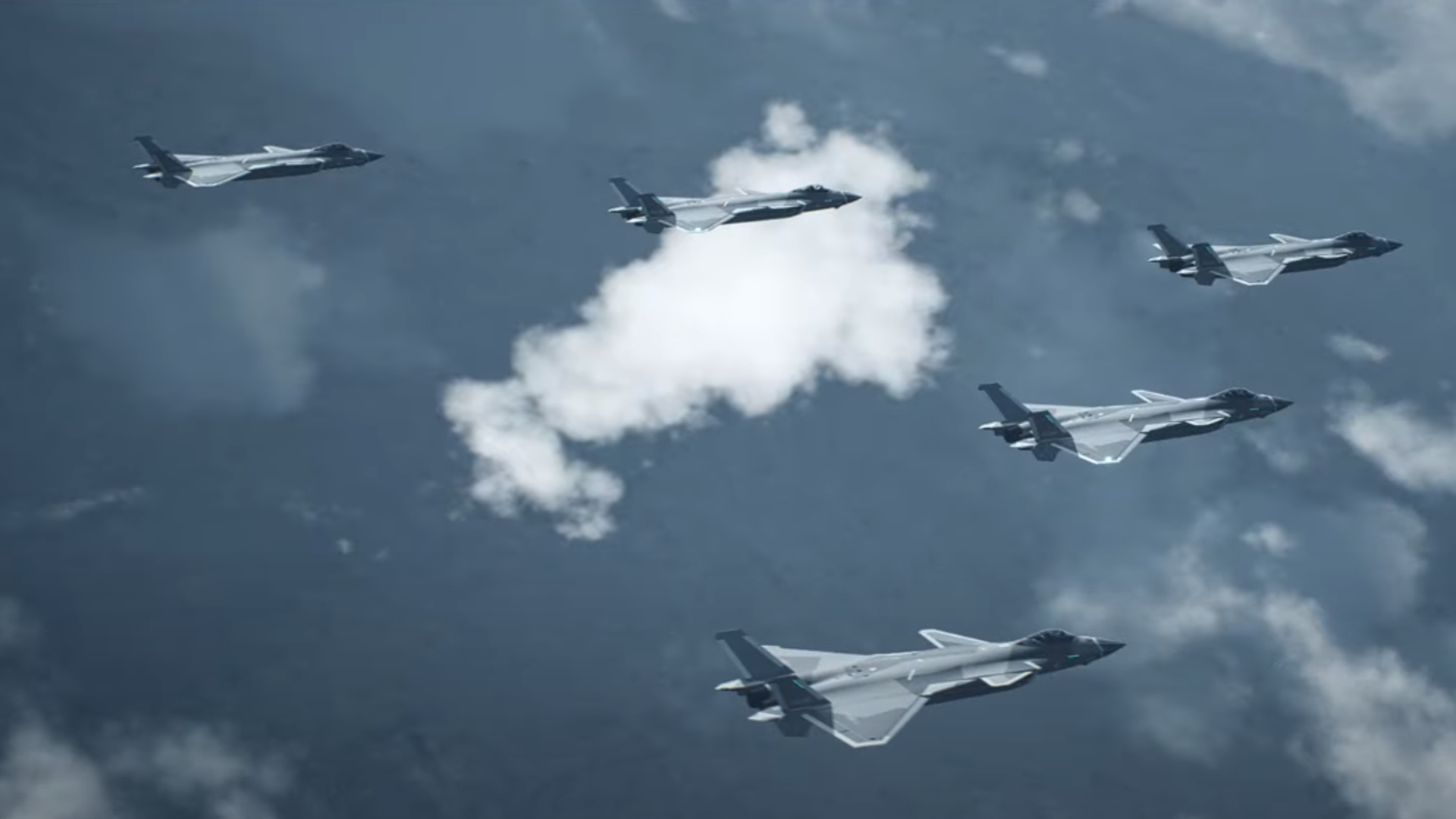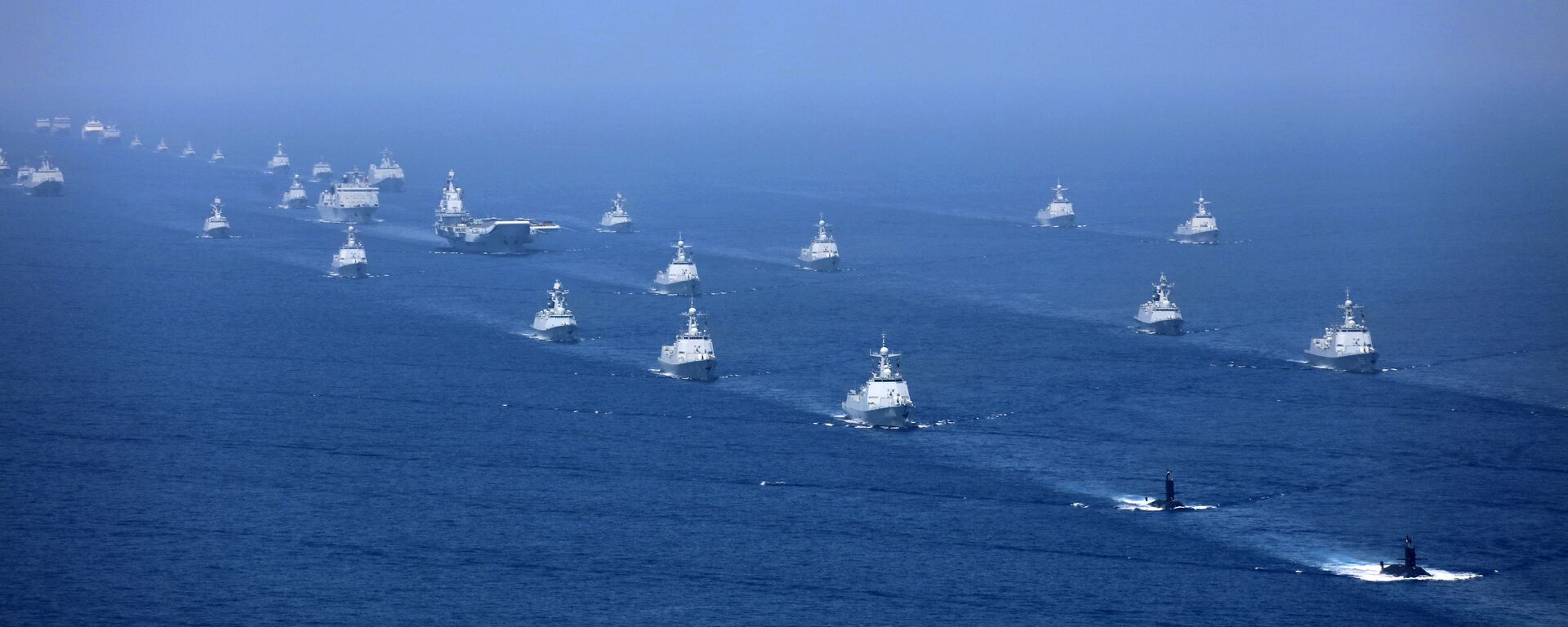https://sputnikglobe.com/20220416/mighty-dragon-awakens-china-confirms-deployment-of-j-20-jets-to-patrol-east-south-china-seas-1094815409.html
‘Mighty Dragon’ Awakens: China Confirms Deployment of J-20 Jets to Patrol East, South China Seas
‘Mighty Dragon’ Awakens: China Confirms Deployment of J-20 Jets to Patrol East, South China Seas
Sputnik International
The Chengdu J-20, also known as the Weilong (lit. “Mighty Dragon” or “Power Dragon”) was introduced into service with the People’s Liberation Army Air Force in... 16.04.2022, Sputnik International
2022-04-16T12:25+0000
2022-04-16T12:25+0000
2022-04-16T12:33+0000
chinese chengdu j-20 fighter jet
south china sea
deployment
https://cdn1.img.sputnikglobe.com/img/07e6/04/10/1094815209_175:0:1231:594_1920x0_80_0_0_790f4c292edead38303b090302bfc172.png
The PLAAF has begun deploying J-20 jets – the country’s most advanced fighter aircraft, on combat and alert patrols in the South and East China Seas, its manufacturer has confirmed.China’s confirmation follows a statement by US Pacific Air Forces commander Kenneth Wilsbach last month that PLAAF J-20s had at least one close encounter with US F-35 jets operating in the South China Sea recently which left the Pentagon “impressed”.Commenting on Wilsbach’s remarks late last month, Chinese Defence Ministry spokesman Col Wu Qian said that the PLAAF “shoulders the sacred duty of defending national security in China’s airspace,” and that “when it comes to defending national sovereignty and security, the PLA will always be ready and capable of wielding its sword.”China currently has as many as 150 J-20 "Mighty Dragons" in its arsenal, with the fighters deployed among all five of the country’s theatre commands.The fighters are believed to have a range of up to 5,500 km (i.e. enough to cover almost the entirety of the South China Sea and contested air and sea space in the East China Sea from bases on the mainland) when carrying twin external fuel tanks. This range could be extended if the fighters can be accommodated on the artificial island airstrips that the PLA has been building in the region.The J-20s’ effective combat range is 2,000 km. They can be armed with up to 11 tonnes of weaponry, including a variety of short, medium and long-range anti-air missiles and small diameter precision-guided bombs.One advantage of the J-20 compared to the F-35 is its twin-engine design. The US jet is equipped with only one engine, which increases dangers for aircraft operating in maritime areas far from aircraft carriers or airports. By contrast, a twin-engine design enables jets to limp back to base in the event that one of its engines suffers a malfunction.The waters and islands of the South China Sea have been heavily contested by the People’s Republic and other countries in the region for decades. The United States became involved in 2010, when then-Secretary of State Hillary Clinton identified the region as a “matter of US national interest”. In the years since, Washington has sought to challenge Beijing’s claims to ownership of large swathes of the strategic maritime and trade artery by making bilateral pacts with other claimants, and sailing warships and US Coast Guard vessels through the area on “freedom of navigation” missions. China has vocally condemned this behaviour, calling on the US to allow regional nations to resolve territorial disputes independently, and demanding that Washington refrain from deploying its warships and aircraft in the area.
https://sputnikglobe.com/20210109/chinese-air-force-releases-first-glimpse-of-h-20-stealth-bomber-design-in-promotional-video-1081710150.html
https://sputnikglobe.com/20220415/beijing-china-to-hold-military-drills-near-taiwan-in-response-to-us-provocations-1094776170.html
south china sea
Sputnik International
feedback@sputniknews.com
+74956456601
MIA „Rossiya Segodnya“
2022
News
en_EN
Sputnik International
feedback@sputniknews.com
+74956456601
MIA „Rossiya Segodnya“
Sputnik International
feedback@sputniknews.com
+74956456601
MIA „Rossiya Segodnya“
chinese chengdu j-20 fighter jet, south china sea, deployment
chinese chengdu j-20 fighter jet, south china sea, deployment
‘Mighty Dragon’ Awakens: China Confirms Deployment of J-20 Jets to Patrol East, South China Seas
12:25 GMT 16.04.2022 (Updated: 12:33 GMT 16.04.2022) The Chengdu J-20, also known as the Weilong (lit. “Mighty Dragon” or “Power Dragon”) was introduced into service with the People’s Liberation Army Air Force in 2017. The design continues to receive upgrades, such as new engines, which allow it to meet and exceed the manoeuvrability and stealth capabilities of foreign analogues.
The PLAAF has begun deploying J-20 jets – the country’s most advanced fighter aircraft, on combat and alert patrols in the South and East China Seas, its manufacturer has confirmed.
Ren Yukun, a spokesman for Aviation Industry Corporation of China, the parent of J-20 maker Chengdu Aircraft Industry Group, said at a press conference this week that the J-20s’ recent switch to advanced, domestically designed engines has allowed for patrols in the East and South China Seas to become part of their “training routine”.
China’s confirmation follows a statement by US Pacific Air Forces commander Kenneth Wilsbach last month that PLAAF J-20s had at least one close encounter with US F-35 jets operating in the South China Sea recently which left the Pentagon “impressed”.
“We’re relatively impressed with the command and control that was associated with the J-20”, Wilsbach said at a conference hosted by the Mitchell Institute for Aerospace Studies, a Washington, DC think tank. The commander noted that Chinese aviators had displayed “relatively professional flying”. Wilsbach also complained about the growing obsolescence of the US AWACS fleet, saying its E-3 Sentry aircraft were incapable of efficiently detecting the stealthy J-20s during their approach.
Commenting on Wilsbach’s remarks late last month, Chinese Defence Ministry spokesman Col Wu Qian said that the PLAAF “shoulders the sacred duty of defending national security in China’s airspace,” and that “when it comes to defending national sovereignty and security, the PLA will always be ready and capable of wielding its sword.”

9 January 2021, 00:06 GMT
China currently has
as many as 150 J-20 "Mighty Dragons" in its arsenal, with the fighters deployed among all five of the country’s theatre commands.
The fighters are believed to have a range of up to 5,500 km (i.e. enough to cover almost the entirety of the South China Sea and contested air and sea space in the East China Sea from bases on the mainland) when carrying twin external fuel tanks. This range could be extended if the fighters can be accommodated on the artificial island airstrips that the PLA has been building in the region.
The J-20s’ effective combat range is 2,000 km. They can be armed with up to 11 tonnes of weaponry, including a variety of short, medium and long-range anti-air missiles and small diameter precision-guided bombs.
One advantage of the J-20 compared to the F-35 is its twin-engine design. The US jet is equipped with only one engine, which increases dangers for aircraft operating in maritime areas far from aircraft carriers or airports. By contrast, a twin-engine design enables jets to limp back to base in the event that one of its engines suffers a malfunction.
The waters and islands of the South China Sea have been heavily contested by the People’s Republic and other countries in the region
for decades. The United States became involved in 2010, when then-Secretary of State Hillary Clinton identified the region as a “matter of US national interest”. In the years since, Washington has sought to challenge Beijing’s claims to ownership of large swathes of the strategic maritime and trade artery by making bilateral pacts with other claimants, and sailing warships and US Coast Guard vessels through the area on “freedom of navigation” missions. China has vocally condemned this behaviour, calling on the US to allow regional nations to resolve territorial disputes independently, and demanding that Washington refrain from deploying its warships and aircraft in the area.





